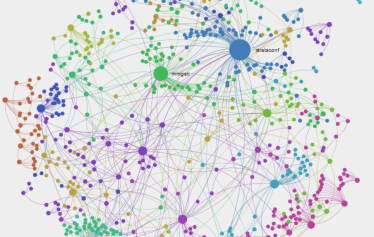Remits seem to be flying in on an almost daily basis for influencer identification in the healthcare communications ecosystem. Whether those influencers are patients, professionals, academics or HCPs, the demand for influential social mavens is at an all-time high. Clients understand the value of social influencers and plan to use them for a number of different reasons including, content creation, activation programs, expert panels, blogger summits, mentorship programs, awareness campaigns, or simply because they want a smart looking data visualization. Below I am going to delve into the world of influencer mapping and explain some of the key elements that go into making this activity a success. This post, the first in a series of two or three, will cover classification of influencers.

The first thing I will point out is that an influencer is not a KOL. When you talk to a client about KOL mapping, the kind of work a Medcomms agency typically does, do NOT expect that from your influencer program. KOLs can also be digital influencers, particularly if they are HCPs or Academics, but digital influencers are rarely KOLs. An influencer can be converted into a KOL with training, exposure and a platform, but I will cover that process in a separate blog post.
Influencer programs should always start with social listening intelligence. The first step is to identify the main social platforms on which conversation is occurring. Interaction e.g. likes and retweets is not always the best indicator of when to source an influencer. It does help, but impactful influencers should also inspire conversation e.g. comments. Your social listening will often tell you that most of the conversation is occurring on Forums / FB Groups. Or on Blogs / Twitter. Many more recently popularized platforms like Instagram / Pinterest, two of the best platforms for visual content and preferred by Gen Z and Moms respectively, are good to keep an eye on, but for now lets focus on Blogs / Twitter and Forums / FB Groups.

Now I’ll explain why I am grouping these social platforms as such. Blogs & Twitter are frequented by a certain type of influencer. These are classified as individual influencers because they have amassed a following all by themselves and they exert influence over this following. They aren’t reliant upon anyone else to help build their following or grow their influence. Take for example, a diabetes patient influencer who has thousands of followers on Twitter or subscribers to her blog. This influencer has, of her own accord, set out to establish and maintain a meaningful social footprint. She is not piggybacking off of an existing group or network. She has built her own.
Forum / FB Groups have a different type of influencer. These are classified as sub-influencers because they haven’t built their own network of influence, instead they are reliant upon an existing one. These sub-influencers may be working just as hard as individual influencers to create content, answer questions or engage community, but it is impossible to determine just how influential they would be if extracted from the Forum / FB Group then setup on their own.
The last grouping of influencers are classified as cross-influencers. Where most influencers are active on multiple social platforms, cross-influencers are also influential on multiple platforms. A cross-influencer is invaluable not only because of their reach, but also because they exert influence over the many types of people that frequent the different platforms they are on.
For the second step, after I’ve identified where the conversation is occurring, I segment the influencers into each of the three classes mentioned above, to form what looks like a hierarchy of influence.
The exercise here is to determine, based on the desired communications goal, which influencers are the most valuable. You do this by assigning value to key social metrics and then weighting those metrics according to the type of influencer. A sub-influencer’s engagement metrics would be weighted at a lesser value because they are part of a much larger Forum / FB Group that helps to amplify their influence.
The two other main considerations in influencer mapping are Audience and Relevance (in addition to Influence). I will cover those in my next post along with the various types of social data points I use to effectively amass social influence scores across the three influencer classifications I mention above. I invite your questions or comments below.

